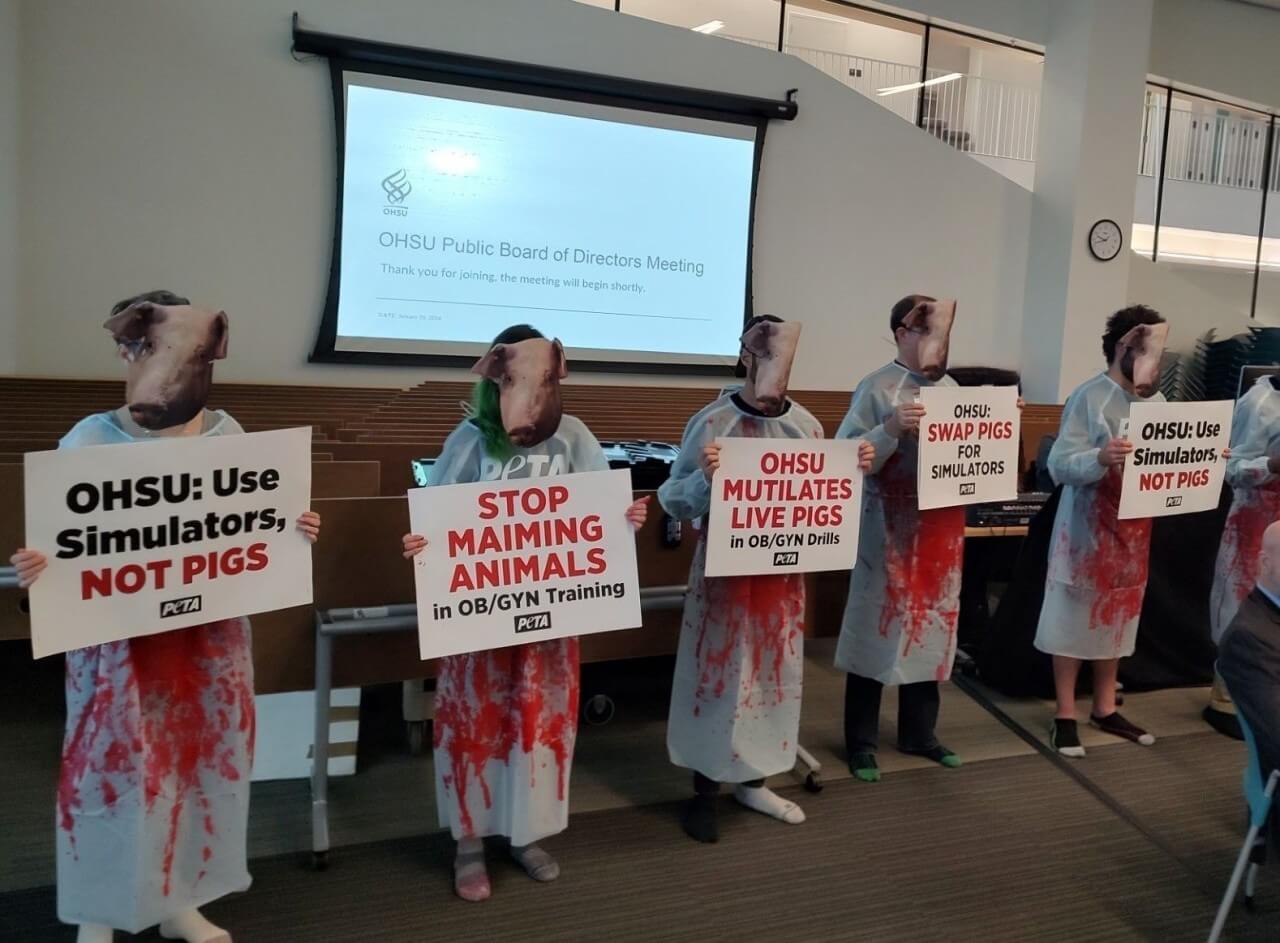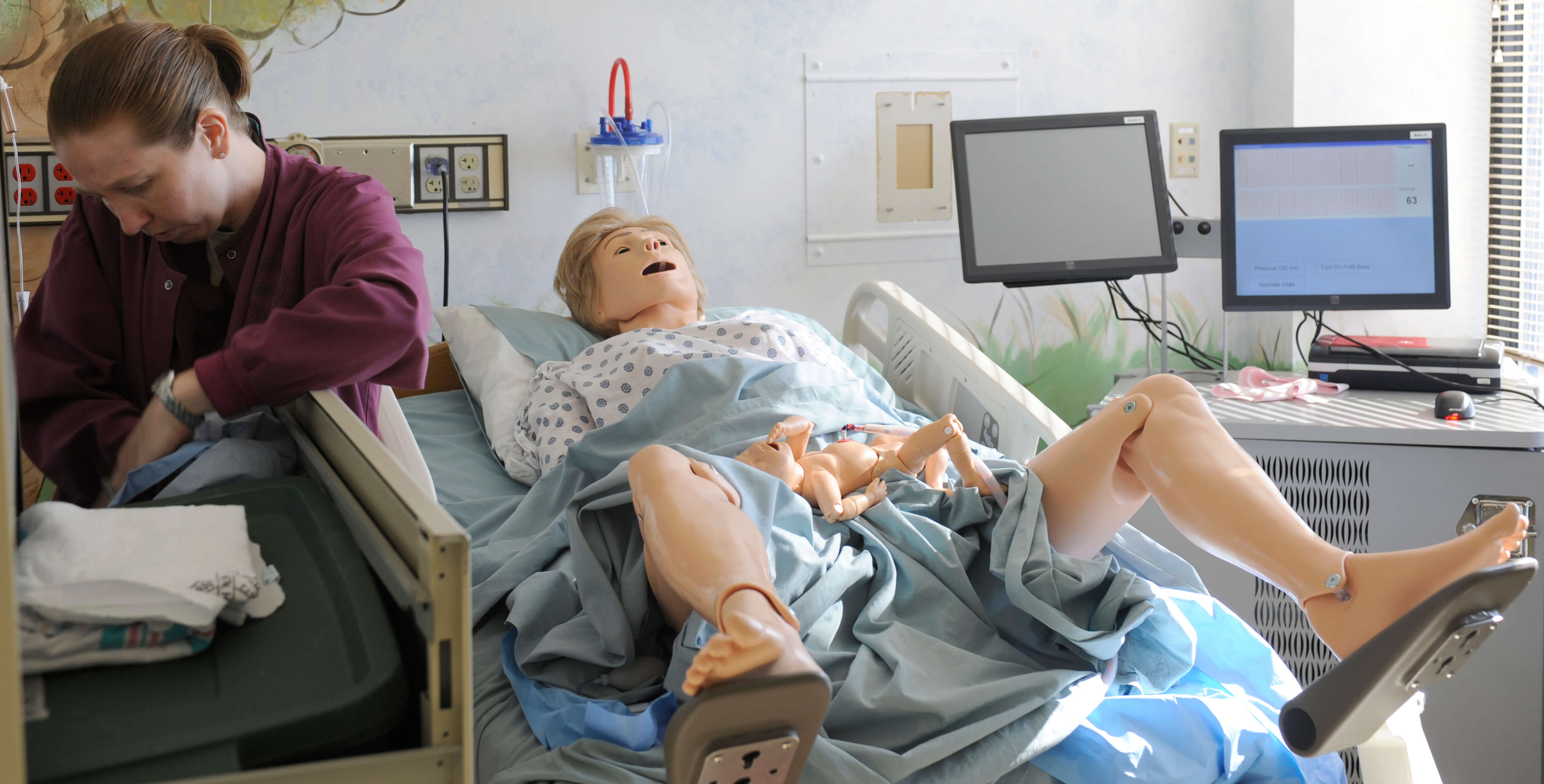UN INT Intro Text w/ Responsive Image - *Important Note* You must UNLINK this shared library component before making page-specific customizations.
ANIMAL USE IN OB/GYN PROGRAMS
ACTION CENTER CAMPAIGN UPDATES
For years, doctors-in-training at Oregon Health & Science University (OHSU) have been using live pigs as stand-ins for women patients to practice surgeries as part of the school’s obstetrics and gynecology (OB/GYN) physician residency training program, according to disturbing public records obtained by PETA.
The records PETA obtained show that at least 64 OB/GYN resident physicians cut into as many as 48 live female pigs, dissected their organs, and performed other invasive surgeries on the animals—all of whom were later killed. Between 2019 and 2020, resident physicians participated in five OB/GYN training drills on live pigs.
We sent a complaint to OHSU urging it to adopt a public policy against using live animals for this purpose, but officials have refused to respond. However, new public records obtained by PETA confirm that our vigorous campaign is working. OHSU officials now state, “The pig lab will not occur this year [2024] due to decreased enthusiasm from the Chief resident class,” and they are doing a “department review … to study the utility of the pig lab,” the result of which “will determine whether it will continue.”
We need your help to demand that the school permanently end this needless cruelty.
Most Schools Have Moved On
According to an ongoing PETA survey of the programs recognized by the Accreditation Council for Graduate Medical Education, dozens of accredited OB/GYN physician residency training programs—including those at Texas A&M University, the University of California–Los Angeles, the University of North Carolina, and the University of Washington—have confirmed that they don’t use live animals to train their residents. Moreover, programs such as the ones at Rush University and Aurora Sinai Medical Center abandoned such animal-based exercises after hearing from PETA and instead transitioned to using advanced, human-relevant simulators, which are equal or even superior to training on live animals. The program at Henry Ford Health also adopted a public policy against using animals for training after discussions with PETA, and the American College of Obstetricians and Gynecologists (ACOG) confirmed to us that “[p]rogramming offered by ACOG does not involve the use of live animals or animal parts.”
“The OB/GYN residency program at Henry Ford Hospital does not use animals for training purposes, and instead uses advanced human patient simulators and other non-animal methods.”
—Henry Ford Health, Obstetrics & Gynecology Residency
Even the U.S. Department of Defense has banned the use of animals for OB/GYN residency training and several other medical education areas since 2014, stating unequivocally that “suitable simulation alternatives can replace the use of live animals.” Furthermore, there are federal ethical provisions in place that compel the minimization of animal use in experiments and training, including the federal Animal Welfare Act.

Live-Animal Training Is Substandard Education
In medicine, lifesaving decisions must often be made within seconds, so familiarity with human anatomical structures is crucial. Pigs and other animals cannot accurately mimic human anatomy. They are simply not the same.
For instance, pig uteruses have an entirely different structure from human uteruses. Other key structures also have different lengths in pigs vs. humans. Substandard training using pigs, such as OHSU’s, fails to prepare doctors for real-life situations.
Better Methods Are Available, Cheaper, and in Use
Non-animal human simulators are available, are in use, and have proved to be more cost-effective and efficient, while accurately modeling human anatomy and physiology. OB/GYN simulation training models, ranging from high-fidelity human-patient simulators to those using computer-assisted learning, create immersive scenarios mimicking real-world medical cases, providing students with hands-on training immediately applicable to human patients. For instance, researchers have validated a cost-effective non-animal simulation model to teach vaginal hysterectomy—and another study found that high-fidelity simulators were “cheaper than practicing on laboratory animals” in the long term.

What You Can Do
Please take a minute to urge OHSU to adopt a public policy permanently banning the use of live animals in its OB/GYN physician residency training program. You can do so by sending polite comments to school officials. To contact them with one message, just copy and paste this block of e-mail addresses in the “To” field of your e-mail:
[email protected], [email protected], [email protected], [email protected], [email protected], [email protected], [email protected]
Feel free to use our talking points (but remember that using your own words is always more effective):
- In the wake of OHSU’s cancellation of its pig lab in 2024 due to its acknowledgement of “decreased enthusiasm from the Chief resident class” for this cruelty, please adopt a public policy permanently banning the use of live animals in OHSU’s OB/GYN physician residency training program.
- OB/GYN resident physicians at OHSU have been forced to practice cruel and invasive procedures on live pigs. These pigs were cut into, their organs were mutilated, and the animals were subjected to other surgical interventions. Those who survived the procedures were ultimately killed.
- By using pigs instead of human-patient simulators, medical personnel are receiving inferior training. Pigs’ anatomy and physiology are vastly different from those of humans.
- Advanced, human-relevant simulation models are available and are at least as effective for training OB/GYN residents. These simulators accurately replicate human anatomy and physiology, providing a more relevant learning experience.
- Dozens of accredited OB/GYN physician residency training programs have abandoned live-animal training. Instead, they use advanced, human-relevant simulators, which are equal or even superior to training on live animals.
Then, use the form below to contact other officials at OHSU.